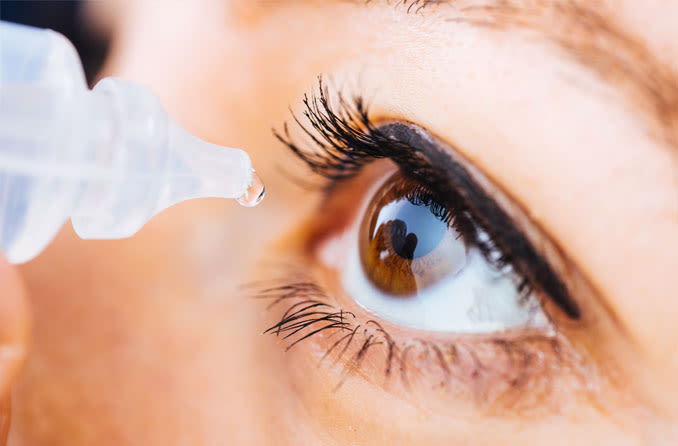Applying eye drops: A guide on how to put in eye drops

Eye drops are used to treat a wide variety of conditions — including glaucoma, eye infections, allergies and dry eyes.
In some cases, applying eye-drops properly is essential to preserving your vision and protecting your eyes.
Whether you need one drop per day or 10, there's a right way and a wrong way to put eye drops in your eyes.
Your pharmacist may give you instructions that are specific to the prescription eye-drops you need, but your optometrist can show you the proper technique for applying eye-drops whether you are using prescription or over-the-counter formulas that you can buy without a prescription.
Failing to learn how to correctly put drops in your eyes can not only defeat the purpose of having them, it can also get expensive. Each time you miss your eye and have to use more drops than you should, it costs you money — potentially a lot of money in the case of some prescription eye-drops.
Putting in eye-drops: Step-by-step
Wash your hands with soap and water; then dry them with a clean towel.
If you are wearing contact lenses, remove them. The only exception is if you are using eye drops that are specifically formulated to "re-wet or moisten" your contacts or if you're advised to use the drops in this manner.
Remove the dropper cap and look closely at the tip to make sure it's not cracked or otherwise damaged. Do not touch the tip.
Either lie down or tilt your head back and look up at the ceiling. Concentrate on a point on the ceiling, keeping your eye wide open.
Place one or two fingers on your face about a centimetre below your eye; gently pull down to create a pocket between your lower eyelid and your eyeball.
Use your other hand to hold the eye drop bottle, pointing the tip downward. Resting your hand on your forehead may help steady it.
Hold the bottle close to your eye (about a two centimetres away). Be careful not to let the dropper touch your eye or eyelashes, since this can introduce bacteria and other organisms into the eye-drops in the bottle.
Squeeze lightly to instill one drop inside your lower lid.
Remove your hands from your face, gently close your eyes and tilt your head down for a few seconds. Try not to blink, as this can force some of the drop out of your eye before it has had a chance to be absorbed.
To keep as much of the drop on your eye as possible, press lightly on the inner corner of your eyelid, next to your nose for about 10 seconds. By pressing at this point, you will enable the eye drop to remain on the surface of your eye longer. (It also will help reduce any funny taste you might get in your mouth after applying certain eye-drops.)
Use a clean tissue to absorb and wipe away any drops that spill out of your eye and onto your eyelids and face.
If you are using eye-drops in both eyes, repeat this procedure for the other eye.
Replace the cap of the bottle and screw it on securely. Never wipe the dropper tip with anything, as this will contaminate the drops.
Wash your hands to clean away any stray eye-drops.
If you need to use more than one eye-drop
Sometimes, you may be prescribed more than one type of medicated eye-drop.
If you apply the drops too quickly in succession, they may spill out of the eye and not be absorbed properly, reducing the therapeutic effect.
If you need to put a second eye-drop in the same eye, wait at least five minutes. This will give time for the first drop to be fully absorbed and create more space for the second drop on the eye.
If you use both a medicated eye drop and a lubricating eye drop on the same eye, many optometrists prefer that you start with the prescription eye drop first and apply the artificial tears about 10 minutes later.
Practice with artificial tears
A little practice can help you master the task of putting eye-drops in your eyes.
Purchase a package of preservative-free artificial tears to use for practice. (Using a preservative-free formula eliminates the risk of you being allergic to preservatives found in some artificial tears.)
Also, choose a product formulated for mild dry eyes — these drops aren't as thick as those made for moderate or severe dry eyes, which can temporarily blur your vision.
Ask a friend to coach you while you are practicing. In particular, have them help you position the applicator at the proper distance and location above your eye, so the drops fall directly on the surface of your eye or in the space between your eye and your lower eyelid.
In less time than you might think, you will become a pro at applying eye-drops.
Also, it's a good idea to keep a supply of preservative-free artificial tears on hand. These drops can help relieve discomfort associated with computer eye strain and are soothing at other times when your eyes feel dry or tired.
Page published on Wednesday, 18 March 2020






